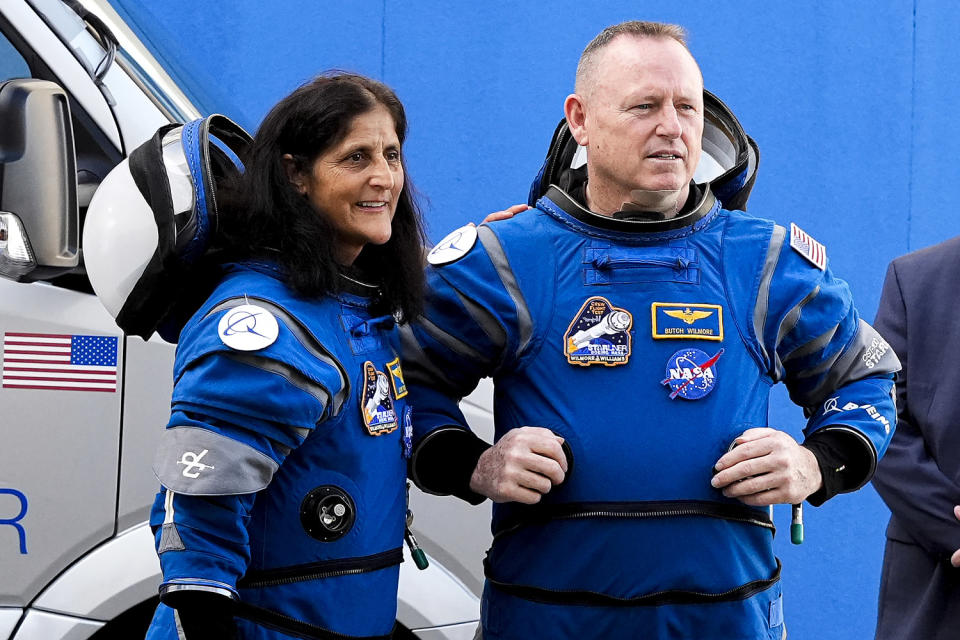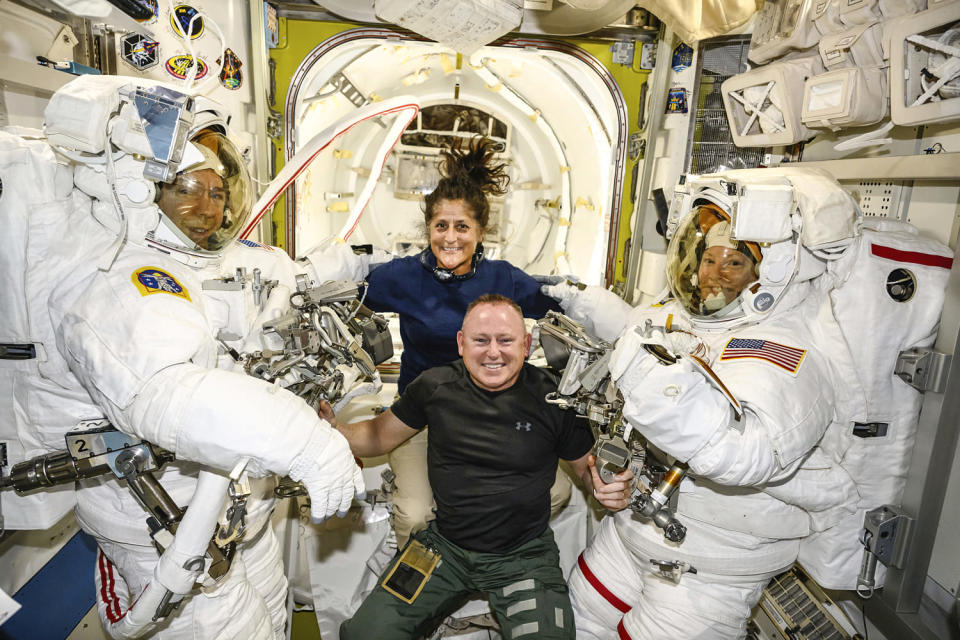Their high-risk mission was supposed to last about a week, but 56 days later, two NASA astronauts are still waiting at the International Space Station as teams on the ground try to find a way to get them home safely aboard the Boeing spacecraft they launched into orbit.
The troubled Starliner capsule has two problems: its propulsion system is leaking helium and five of its thrusters failed while docking with the ISS. Mission managers were aware of the leaks before the craft lifted off but said they were unlikely to affect the flight or the safety of the astronauts.
Over the weekend, NASA and Boeing engineers conducted a major test of Starliner, which sends experienced astronauts into space. Sunita Williams and Butch Wilmore on the vehicle’s first crewed flight on June 5.
The “hot fire test,” as it’s known, was the second test of Starliner’s thrusters while docked with the space station. It involved firing 27 of the capsule’s 28 jets in bursts no longer than 1.2 seconds. Engineers on the ground assessed the performance of each thruster and also checked for helium leaks.
NASA said in a blog post Tuesday that preliminary results were encouraging, noting that all of the thrusters tested performed well.
“Both teams were very pleased with the results,” Chloe Mehring, flight director for NASA’s Starliner mission, said in a statement.
The agency also said it confirmed that Starliner’s propulsion system was stable and that helium leak rates were not increasing in a way that could jeopardize the return trip to Earth. The helium system will be checked again before the Starliner capsule leaves the space station, according to NASA.
Wilmore and Williams were seated inside the Starliner capsule during a hot-fire test in preparation for return, NASA said.
The thrusters are vital for maneuvering the spacecraft in orbit, such as when the capsule approaches the space station and when it pulls back from the outpost during the separation process.
The capsule’s reaction control thrusters are also used to guide the capsule into position before a different set of engines are fired to begin the deorbit journey.

The Starliner tests in orbit follow weeks of ground-based testing using a test engine at NASA’s White Sands Test Facility in New Mexico. Teams subjected the engine and thrusters developed for future Starliner flights to conditions similar to those the capsule experiences en route to the space station. Engineers also replicated the conditions Starliner will experience as it leaves docking and prepares to reenter the atmosphere.
In the coming days, NASA and Boeing officials will evaluate the data from all the tests conducted so far and may conduct a formal inspection to discuss when to bring the capsule and astronaut crew home.
NASA has not yet set a landing date for the mission but has said there are opportunities through August.


NASA initially set a 45-day time limit for Wilmore and Williams to stay at the space station because of limitations on the Starliner capsule’s batteries. But agency officials said earlier this month that the spacecraft’s batteries are recharged while it is docked, reducing the risk of the capsule remaining in orbit for too long.
With the mission, Boeing hoped to prove that its Starliner capsule could safely transport astronauts to and from the International Space Station, a key step before NASA authorizes the company to conduct routine flights to the orbital outpost. Rival company SpaceX has been carrying NASA astronauts since 2020.
Starliner’s first uncrewed test flight in 2019 also ran into problems and was cut short after software glitches prevented the capsule from attempting to dock with the space station. Subsequent fuel valve issues caused several delays before the vehicle could dock with the ISS without a crew in 2022.
In the spring, the launch of NASA astronauts was postponed twice and then finally launched.
Wilmore and Williams’ extended stay at the space station has further crowded the orbiting base, but mission managers said there are enough supplies and resources on board to accommodate them.
While awaiting their return to Earth, Williams and Wilmore, along with the seven other crew members aboard the space station (four NASA astronauts and three Russian cosmonauts), conduct science experiments and assist with various space station missions.
“This is a tough business that we’re in,” Wilmore said during a press briefing from the space station earlier this month. “Human spaceflight is not easy in any regime, and there have been multiple problems with any spacecraft ever designed, and that’s the nature of what we do.”
This article was originally published on NBCNews.com